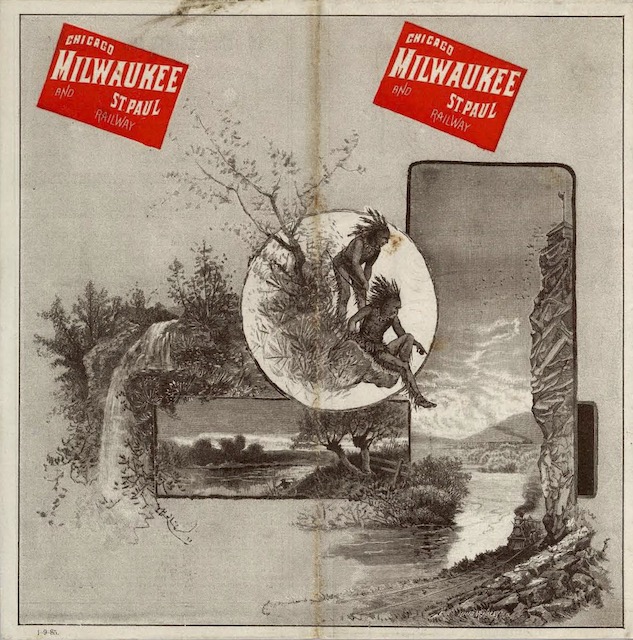In 1885, the St. Paul Road (as the Chicago, Milwaukee & St. Paul then styled itself) was highly profitable, earning $24.4 million in revenues on $14.5 million in operating expenses. Although much of its profits came from shipping grain, $5.5 million, or close to a quarter, of its revenues came from carrying passengers.
 Click image to download a 6.3-MB PDF of this timetable, which is from the David Rumsey map collection.
Click image to download a 6.3-MB PDF of this timetable, which is from the David Rumsey map collection.
As this timetable makes clear, the St. Paul Road’s most-important passenger route was between Chicago and the Twin Cities, over which the railroad was produce to say that it carried the “fast mail” and connected with the Northern Pacific to Portland. It offered two passenger trains a day each way, one taking 16-1/2 hours and the other 19 hours to get from Chicago and St. Paul (plus another 45 minutes to get to Minneapolis). That’s slightly less than 25 mph for the faster train and 22 mph for the slower one. Compare this with 1938 when the Hiawathas took 6-1/2 hours between Chicago and St. Paul for average speeds of more than 63 mph.
The second-most important route was between Chicago and Omaha and a connection with Union Pacific. Again, it offered two trains a day, one taking 21 hours and 50 minutes and the other 21 hours and 5 minutes from Chicago to the U.P. transfer point, for average speeds of 22 to 23 mph.
Curiously, on both these routes, the westbound trains are numbers 1 and 3 and the eastbound trains are numbered 2 and 4. That could have caused some confusion in Chicago, where the two routes met. None of the trains shown on the timetable have names; in calling itself “the fast mail line,” the railroad only meant that it had the contract to carry the mail between Chicago and St. Paul, not that it named any of its trains the “Fast Mail.”
This timetable, which has both west- and eastbound trains, shows plenty of other routes as well, including trains to Fargo, Aberdeen, Winnipeg, Sioux Falls, and Oshkosh. It also has an innovation we haven’t seen on timetables in earlier years: an index of cities and the panel number of the timetable on which they are listed.
